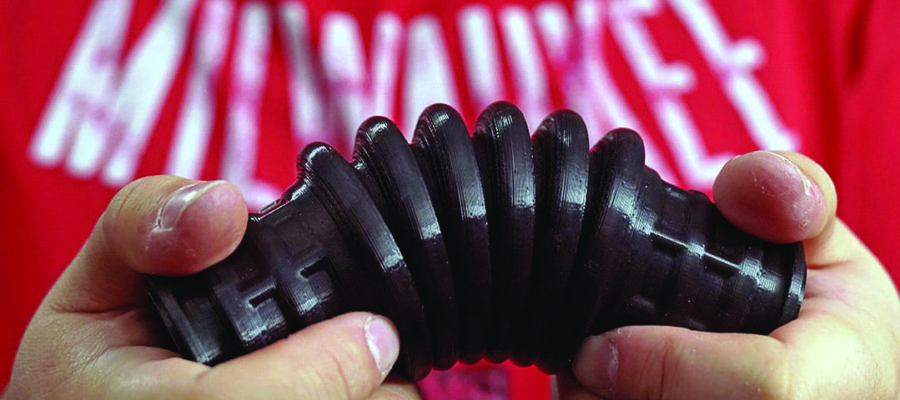We train students on additive, and at the same time help Consortium members integrate additive manufacturing into their internal operations in ways that makes financial sense to them.
Vince Anewenter, MSOE.
Students at Milwaukee School of Engineering (MSOE) and its Additive Lab Consortium members are continuously learning the rapidly changing additive manufacturing industry. The school, which consists of 2,900 students, shares ties with about 47 manufacturing companies – some of which include Kohler, Snap-on Tools, Baxter Medical and Master Lock.
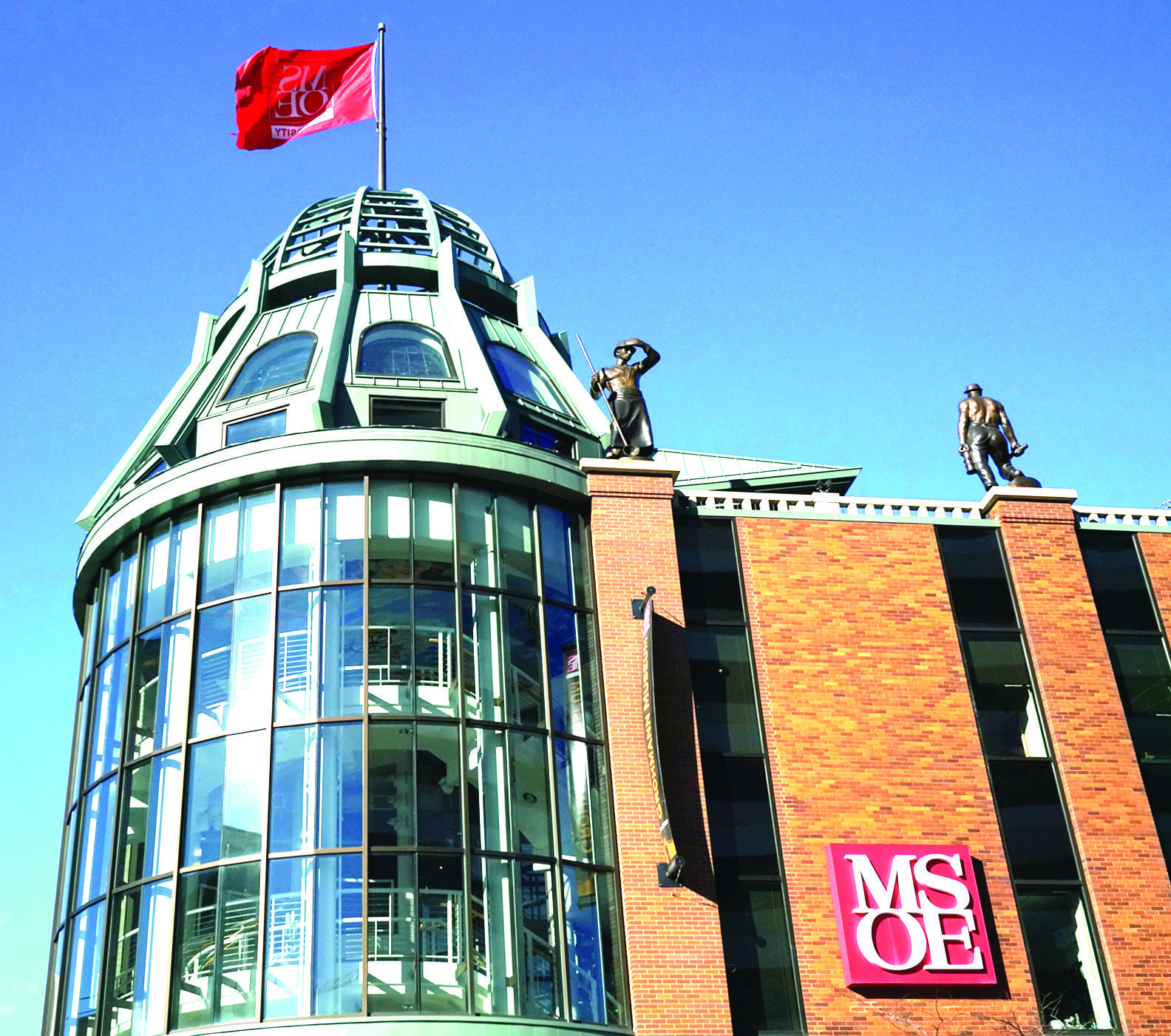
The Consortium was created about 27 years ago when MSOE was faced with a 50 percent shortfall in the funds required to get an additive lab running. The school opened partnership talks around additive technology, where four founding partners joined – each contributing one-eighth of the cost of the lab. In return, they were given non-competitive shared access. As of now, consortium members pay yearly dues in return for lab hours and access to additive manufacturing expertise.
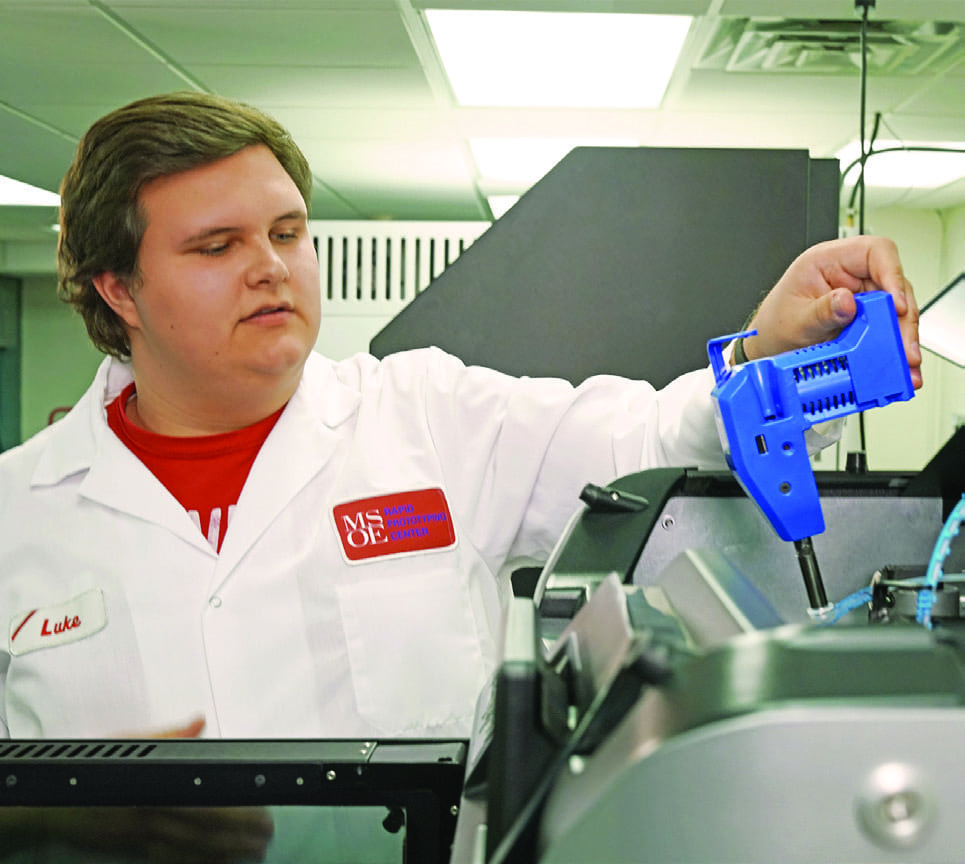
Learning-By-Doing
According to Vince Anewenter, director of Rapid Prototyping at MSOE, focusing on application development, education, and training, there’s crucial value for both industry and education. “We function as that conduit of information that helps companies understand new technologies, learn to design for AM and train students in what we call ‘economic engineering’, the process of improving something and making sure it’s financially viable,” said Anewenter.
There’s much more to MSOE than simply housing an additive lab; there is also an RP center which employs students who work within the industry. This also assists businesses in solving unique challenges focused on new product development. “We walk that tightrope of being centred in an educational institution but needing to perform on industry timelines. The greatest gift we can give students id the opportunity to work on resume-worthy projects,” said Anewenter.
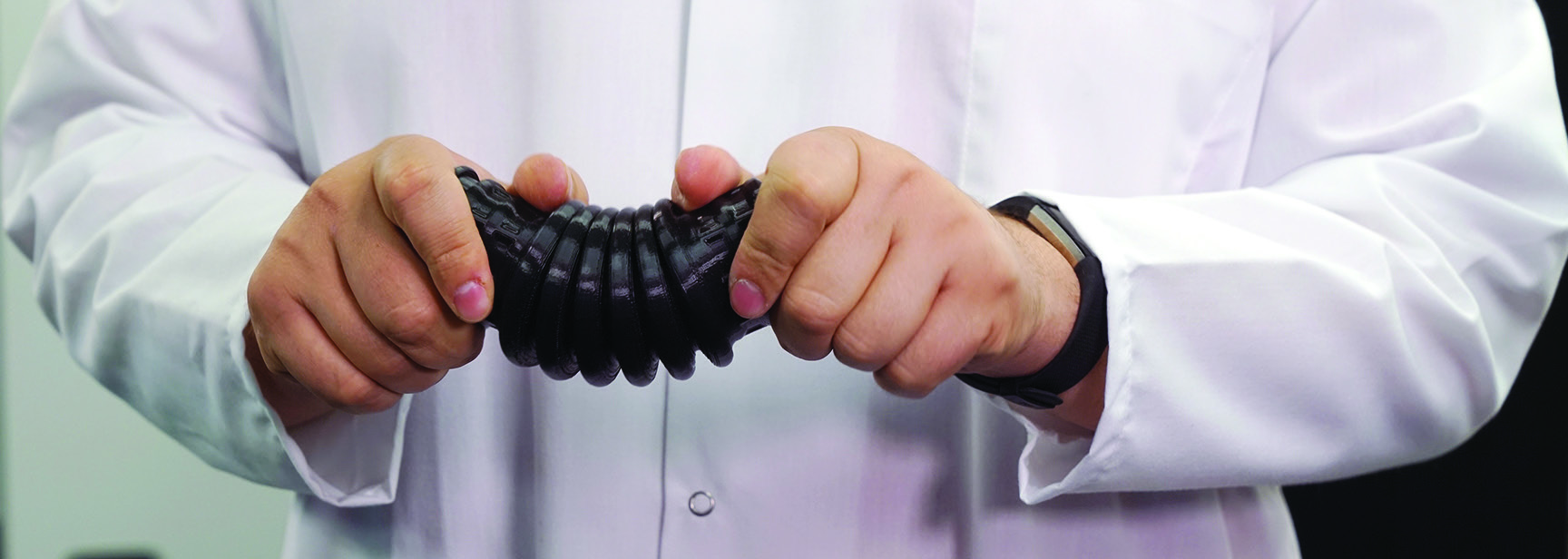
Anwenter claims design for additive manufacturing (DFAM) still remains the biggest challenge for the industry. “Not everything should be machined and not everything should be 3D printed. The trick is learning the ins and outs of the benefits of each process,” Anewenter said.
“Manufacturing today is completely different than manufacturing was twenty years ago. Not having access to 3D printing on campus isn’t really an option. It’s assumed that schools will provide additive technology with the way it’s assumed we’ll have wi-fi.”
Connecting industry and education go hand in hand because of the 3D printing lab at MSOE. The institution supports a wide range of additive technologies, with materials being a frequent point of discussion. “There’s been lots of demand for functional rubber parts by industry, specifically tougher materials, with engineered resilience, capable of producing complex structures,” said Anewenter.
Anewenter relies on the Stratasys F123 Series printers to print large, complex parts. He adds “it was 15 minutes from the time we uncrated the printer to the time we started printing successful parts.” There was no shock when MSOE became successful using FDM TPU 92A. “Stratasys typically doesn’t introduce a new product until it’s vetted and game-ready.”
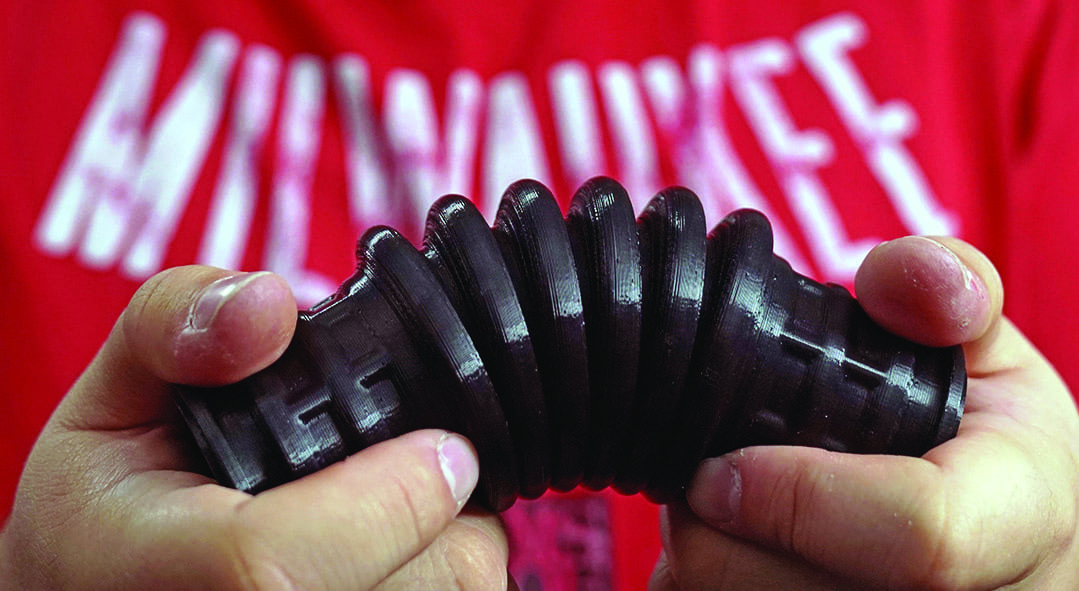
The Stratasys Certification Program also helps in preparing career-ready students. “Honestly, the comprehensiveness of the program has opened our eyes to some of the gaps in our training of students,” Anewenter says. He also showcases the benefit to enabling the workplace of tomorrow. “Many of our Consortium members are very excited about the Certification Program. It means companies can hire future employees with the confidence they need to ensure that an employee has a comprehensive knowledge of additive manufacturing.” And according to Anewenter, the best part of all this is “it’s a way for our students to articulate that knowledge in a standardized way.”
The partnering of industry and education is a win-win says Anewenter. “We can train students on additive, and at the same time help Consortium members integrate additive manufacturing into their internal operations in ways that make financial sense to them.”
… it was 15 minutes from the time we uncrated the printer to the time we started printing successful parts.” –
Vince Anewenter, MSOE
